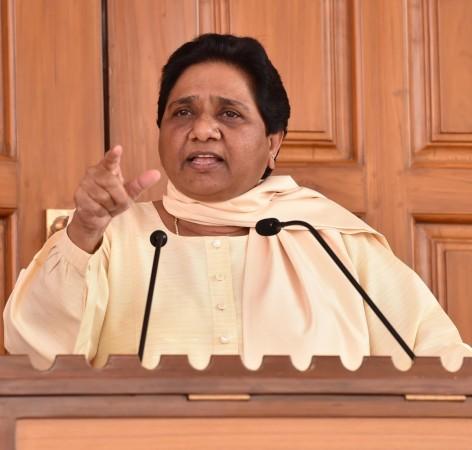
The defeat of Mayawati, the Bahujan Samaj Party (BSP) supremo and the Dalit messiah, in the UP elections of 2017 has not surprised many.
The leader, who was known for her skills in sewing-up rainbow alliances and reached the peak of her political career in 2007 by amassing a majority for her own party, has failed miserably in two back-to-back elections now.
Also read: UP elections 2017: Mayawati blames "rigging of EVMs" after results
According to experts, Mayawati's complicated game of engineering alliances between unlikely social allies like Brahmins and Dalits, the lack of imagination beyond criticism of one's opponent; and Samajwadi Party's 'law and order failure', did not prove sustainable in the long run and she perished.
On the contrary, the revival of the BJP under Prime Minister Narendra Modi's dynamic leadership made the challenge all the more difficult.
Now, the fall of Mayawati raises a pertinent question: Have all of India's powerful women fallen, with the sole exception of Mamata Banerjee of the Trinamool Congress (TMC)?
The anti-establishment women's club membership thinning
The league of Mayawatis and Mamatas represented an anti-establishment voice – be it in terms of social, gender or class identities.
The death of Jayalalithaa, the mercurial leader from Tamil Nadu in December last year, made membership of the club thinner and now with Mayawati's defeat and chances of her politics succeeding again looking slim, there is a big question mark over the future of this exclusive brand of women politicians.
Two other members of this club — who have either faded with time or adapted to the changing times — are the Congress's Sheila Dikshit and the BJP's Sushma Swaraj – both former chief ministers of Delhi.
Sheila Dikshit has gradually faded along with the Congress
Dikshit, a woman for all seasons for the Congress party, even at the age of 80, was the party's poster girl for a long time. Even when the party had no other faces to show, it projected Sheila to win people's trust -- even beyond the borders of Delhi, including in Gujarat – the territory of enemy #1 Modi.
She was also initially roped in as the party's chief ministerial candidate for the UP elections though she later withdrew. With the Congress's base shrinking unbelievably fast and her own age advancing, Sheila Dikshit, who ruled Delhi for 15 consecutive years, is certainly a name fading into the mists of time.
Sushma Swaraj has adapted to a new role
Swaraj, on the other hand, one of the prominent leaders of the current Narendra Modi government, has carved a niche for herself after understanding that there is no point in taking on the Modi phenomenon while it is at its peak.
The smart decision has seen Swaraj creating an identity of her own as the country's external affairs minister, but without coming into the way of the ubiquitous prime minister.
Swaraj, who once threatened to shave off her hair if 'foreigner' Sonia Gandhi became the prime minister, has adapted to a new role which is more subtle, and in which she excels.
Mamata as the last of the proverbial Mohicans
That has left Banerjee as the only firebrand woman leader in the country. It is not because the TMC leader has calmed her temperament; her basic style of taking on an opponent has remained the same.
Having decimated all opponents twice in Bengal, the TMC supremo now eyes the throne in Delhi and has tried to form a federal front consisting of anti-Modi forces.
Whether Banerjee's plan will succeed or not is another story, but there is no denying the fact that she is the last remaining woman in a tradition which has added more colour and verve, not to mention grit, to India's political story.





!['Lip lock, pressure, pyaar': Vidya Balan- Pratik Gandhi shine in non-judgmental infidelity romcom Do Aur Do Pyaar [ Review]](https://data1.ibtimes.co.in/en/full/797104/lip-lock-pressure-pyaar-vidya-balan-pratik-gandhi-shine-non-judgmental-infidelity-romcom.jpg?w=220&h=138)







